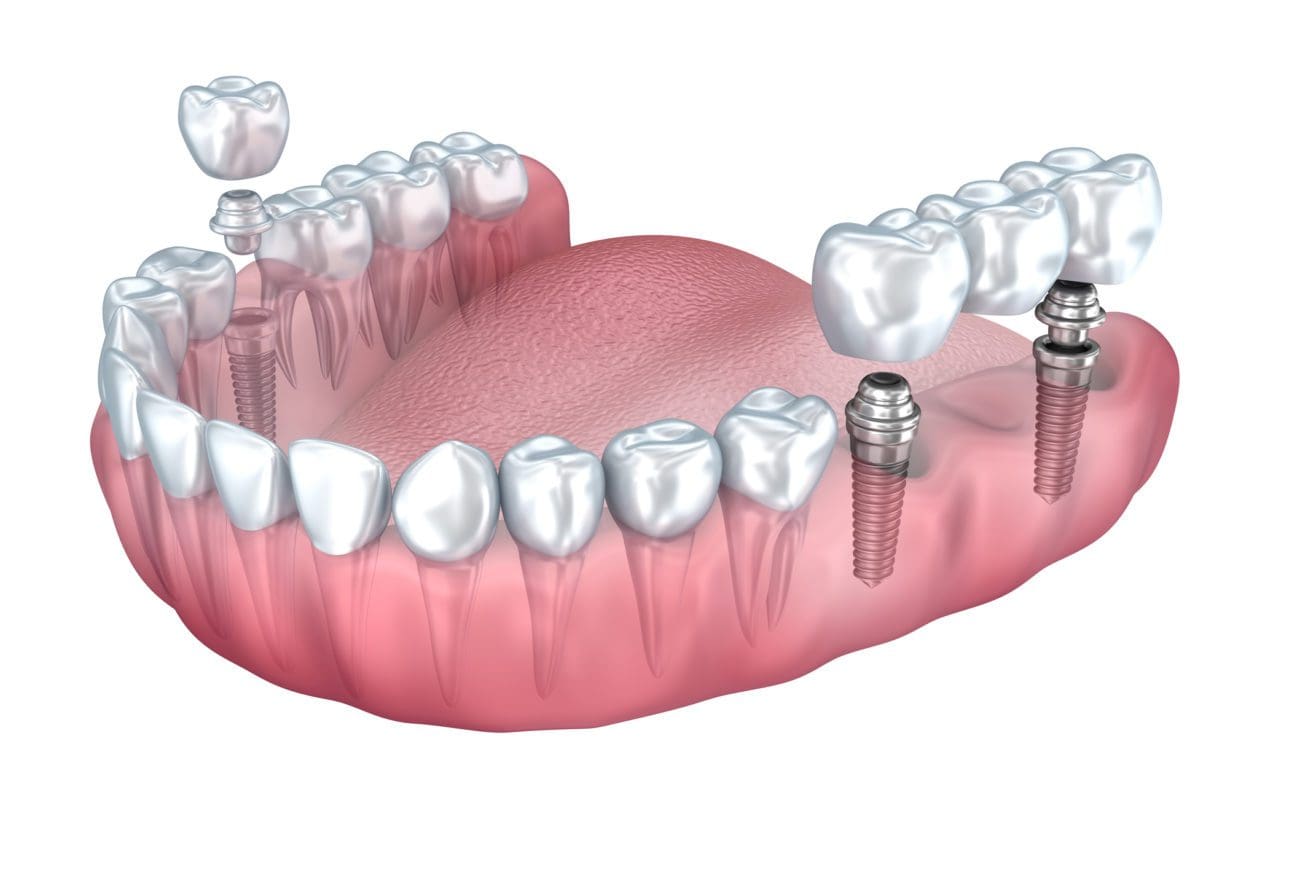Dental Sense for Dummies
Dental Sense for Dummies
Blog Article
The Definitive Guide for Dental Sense
Table of ContentsThe Facts About Dental Sense UncoveredUnknown Facts About Dental SenseAll about Dental SenseAn Unbiased View of Dental Sense
are clinical gadgets surgically dental implanted right into the jaw to bring back a person's ability to eat or their look. They provide assistance for man-made (fake) teeth, such as crowns, bridges, or dentures. When a tooth is shed as a result of injury or condition, a person can experience difficulties such as rapid bone loss, malfunctioning speech, or changes to eating patterns that result in pain.Dental dental implant systems consist of a dental implant body and oral implant abutment and may additionally consist of a joint fixation screw. Dental implant vs bridge. The oral implant body is operatively put in the jawbone instead of the tooth's root. The oral implant joint is generally affixed to the implant body by the abutment addiction screw and expands with gum tissues into the mouth to support the attached synthetic teeth
(https://www.ted.com/profiles/48604569/about)Structure of The Oral Implant System picking oral implants, speak to your oral supplier about the potential benefits and threats, and whether you are a candidate for the procedure. Things to consider: Your total wellness is an important variable in figuring out whether you are a great prospect for dental implants, the length of time it will certainly require to heal, and for how long the implant may remain in area.
Smoking cigarettes may affect the recovery procedure and reduce the long-term success of the dental implant. The healing procedure for the dental implant body may take numerous months or longer, during which time you commonly have a short-term abutment in place of the tooth. the dental implant procedure: Thoroughly comply with the oral hygiene guidelines offered to you by your dental company.
Dental Sense Fundamentals Explained
Implant failure can result in the need for an additional operation to take care of or replace the implant system. Restores the capacity to chew Recovers aesthetic look Assists keep the jawbone from reducing because of bone loss Maintains the health and wellness of the bordering bone and periodontals Helps maintain adjacent (close-by) teeth secure Improves lifestyle Damages to bordering natural teeth during implant placement Injury to the surrounding cells throughout surgical treatment, such as sinus opening Injury throughout surgery (as an example, fracture of bordering jawbone) Insufficient function, such as seeming like the teeth do not attack together typically An experience that the tooth hangs or twisting in location resulting from an abutment screw loosening up Implant body failing (looseness of the implant body) because of systemic infection, which may be most likely in patients with uncontrolled diabetics issues because of neighborhood infection in bone and periodontals supporting the implant body because of postponed healing, which might be more probable in clients who smoke Problem cleaning the gum tissues around the dental implant, leading to inadequate oral health Untreated gum disease Post-surgical feeling numb due to nerve impingement or damage Constantly alert health and wellness treatment service providers and imaging service technicians that you have dental implants before any kind of magnetic vibration imaging (MRI) or x-ray treatments.
FDA is not familiar with any damaging occasions reported for MRI or x-ray treatments with dental implants. Dental implants systems are normally made of materials that follow global agreement standards of the International Company for Standardization (ISO) or ASTM International. These criteria have details of what makes a safe material.

A dental implant is a framework that changes a missing out on tooth. With screw-like devices, the cosmetic surgeon inserts a dental implant into the jawbone, and it works as a support for a man-made tooth, called a crown. A tool called an abutment links the fabricated tooth to the dental implant. The crown is tailor-made to fit the person's mouth and match the color of their teeth.
The Best Guide To Dental Sense
Some individuals are not qualified for dental implant surgical treatment. It is for dental doctors to operate individuals with: intense illnessuncontrollable metabolic diseasebone or soft tissue illness or infectionIf these concerns are solved, an individual can have the surgical procedure. In, dental doctors abstain from running on people with: If people with any one of the above undertake dental implant surgical procedure, there is a higher threat of the implant stopping working.

Oral implant surgical procedure is a tailored procedure. It's not the very same for every person. But the adhering to provides a general overview of what you can anticipate your dentist, oral cosmetic surgeon, periodontist or prosthodontist to do: Place the dental implant operatively. Provide you time to heal. Attach the message and final crown, bridge or denture.
Next off, your specialist will meticulously position the dental implant right into your jaw. If your implant is near the front of your mouth, your dentist will make a momentary tooth for you to put on till you recover.
How Dental Sense can Save You Time, Stress, and Money.
During the recovery phase, your jawbone must fuse to the oral implant. This process can take anywhere from three to nine months.
Once your dental implant heals, your dentist can connect the abutment (tiny port blog post) and your last reconstruction (crown, bridge or denture). This generally takes regarding one hour to complete and may call for a second minor surgical procedure. You shouldn't really feel any pain during your dental implant procedure due to the fact that your supplier will utilize drug to numb your gums.
Report this page